Driving a car is one of the most popular activities in the world. It’s obvious because by using this kind of transport we can save a lot of time getting somewhere. People may drive for different reasons, as a hobby, for travel, for business, etc.
Despite the fact a car is a useful and convenient kind of transport, it does require some work. Car owners have to take care of their vehicle and monitor the condition of various parts. There are many problems and difficulties that driver may face while using their car.
- Check your car battery status;
- Read our review of the battery courses:
- Battery recondition course
- Military Battery Reconditioning System
- DIY 3D Solar battery
3. Restore your battery and use the device without worrying that you do not have enough charge
One of the most common issues that drivers often face is the draining of their car battery. This is largely due to battery acid, but not everyone knows how to deal with it. Many beginner drivers and even experienced motorists quite often ask such questions as: What is battery acid? Where to buy battery acid? How to clean battery acid? How to remove battery acid? In this article, we will answer these and many other questions.
Table of Content
- 1 What is battery acid?
- 1.1 When is electrolyte used?
- 1.2 Other uses for battery acid
- 2 More details about battery acid
- 2.1 Chemical composition
- 2.2 Possible consequences of getting sulfuric acid on skin and clothes
- 3 How to deal with the acid correctly
- 3.1 Protective Clothing
- 3.2 Eye Protection
- 4 How to check the level of electrolyte in a sealed lead acid battery
- 4.1 Reasons for low electrolyte level
- 4.2 How to deal with low electrolyte level
- 5 Where to buy battery acid
- 5.1 How to buy battery acid
- 5.2 Storage conditions
- 5.3 Precautionary measures for storing acid
- 6 How to clean battery acid
- 6.1 Preparations for acid cleaning
- 6.2 What to do if the dangerous substance has got on skin or clothes
- 6.3 Preparation for cleaning battery acid from other surfaces
- 6.4 How to clean battery acid step by step
- 6.5 Leak prevention
- 7 How to clean the battery terminals?
- 7.1 The causes of corrosion
- 8 What to do if the battery doesn’t hold a charge
- 9 Conclusion
What is battery acid?
There is liquid inside the sealed lead acid battery. Some people think it is water, some of them think it is sulfuric acid. But neither is right because this liquid includes both water (50-70%) and acid (30-50%). This liquor is called an “electrolyte”. On average a mole fraction of Acid is 29-32% of sulfuric acid, density is 1.25-1.28 kg/L and concentration of 4.2-5 mol/L, a Ph of battery acid is about 0.8.
When is electrolyte used?
The electrolyte is usually used in the sealed lead acid battery. But there is one more type, in which the sulfuric acid is normally used. It is a gel battery.
The operating principle of this battery is similar to the simple acid one. The only difference is that the gel battery is filled not only with the sulfuric acid but also with a silicon substance. This gel is made from silica.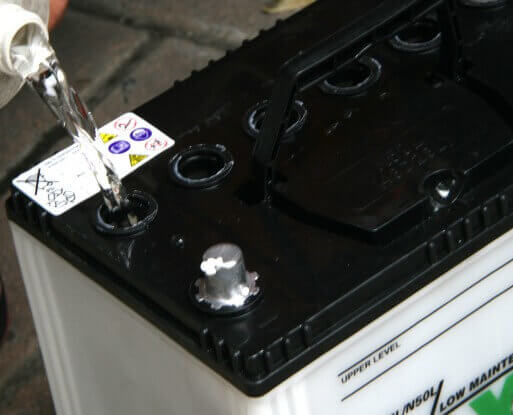
Other uses for battery acid
Sulfuric acid is used in different branches of the national economy. For example, it helps to clean metal surface before coating and is used as a component in the production of synthetic dyes. Sulfuric acid is also needed in following areas: fertilizer production, explosives creation, pharmacological industry, oil refining, etc.
More details about battery acid
Chemical composition

Sulfur battery acid has various chemical characteristics and can be quite dangerous. If you add something to it or get it on your skin or clothes, the consequences can be unpredictable and even dangerous.
Possible consequences of getting sulfuric acid on skin and clothes
If the electrolyte has gotten on your skin it is not as dangerous as it seems to be. The concentration of the sulfuric acid in the electrolyte isn’t enough to be fatal or even very dangerous. The maximum impact that the liquid can have is a burn. It is much worse when concentrated sulfuric acid gets on the skin. This substance is quite thick and it’s important to know how to clean battery acid from skin properly to avoid severe damage.
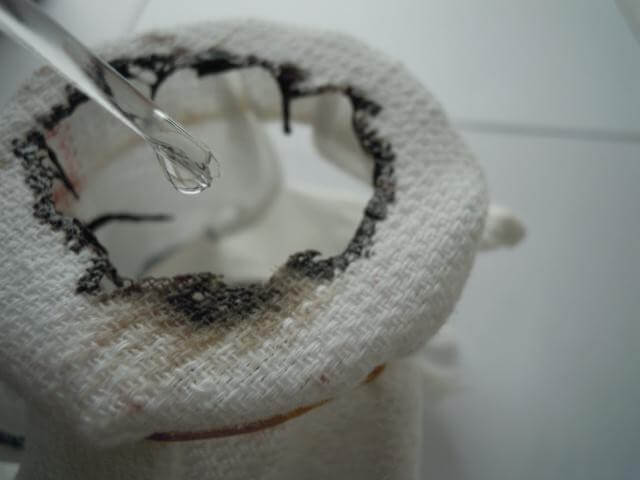
If the dangerous substance gets on your clothes, nothing will help you to remove the spots. In these areas, the clothes are damaged with acid and the only thing you can do is try to dye or cover it with a patch.
How to deal with the acid correctly
Dealing with such a dangerous chemical means it is necessary to pay attention and be as careful as possible. To avoid problems while dealing with the acid it is better to know how to protect yourself from unfortunate accidents. Make sure that you use appropriate chemicals and protection. Provide enough light and fresh air in the room so you are not overwhelmed with fumes.
Protective Clothing
It is recommended that you use rubber gloves when handling battery acid. To protect clothes and footwear it is better to wear a specialized protective suit, galoshes, and a rubber apron.
Eye Protection
To protect your eyes, it is necessary to wear special protective goggles as you deal with the acid.
How to check the level of electrolyte in a sealed lead acid battery
To check the level of electrolyte in the sealed lead acid battery you need a measuring tube with divisions or something that looks similar to this tool. It can be a transparent pen or juice straw. The normal level of electrolyte is 10-12mm above the battery plates. So, before checking the acid levels, measure this distance and make a mark. Put the tube inside and pinch the other end of the tube with your finger. Then take it out and check whether the electrolyte level is under or over the mark. If you see that liquid doesn’t reach the mark, add some distilled water or acid. If there is more liquid then it is needed, you have to pump it out until the mark is reached.
Reasons for low electrolyte level
Constant evaporation and boiling-off of the electrolyte may be caused by the following reasons:
- increased generator voltage (more than 14.4V)
- the electrolyte level is too high
- body-damage, an appearance of cracks
- short-circuiting of one of the battery plates
How to deal with low electrolyte level
If you see that the electrolyte in the battery is not enough, find out whether you need acid or water to add. For that, you have to identify the density of liquid inside. To do this, you need a tool called an “aerometer”. Put the device inside the battery and add a little of the liquid inside the flask. Density will be shown on the scale. Measure it in every section of the battery and then count the arithmetical mean. It must be about 0,05 lb/ln3 (1,29 g/sm3).
If the level of the liquid is low, but the density is above the allowed index just add some distilled water. If there is a normal level, but density is too high, you have to take out some electrolyte from each section of your battery and add some water. Continue doing this until the index is normal, but don’t forget to keep the level of electrolyte between 10-12mm from the battery plates.
Where to buy battery acid
As concentrated sulfuric acid is a dangerous chemical, generally used for producing drugs and for manufacturing, it is quite difficult to buy, especially in great amounts. It is possible to purchase sulfuric acid via the Internet, but you never know whether suppliers have appropriate licenses that allow them to sell chemicals. It is possible, but quite difficult to find a legal supplier which runs according to the law and is able to prove it with the right paperwork.
How to buy battery acid
There is a much easier and safer way to buy battery acid. You can purchase an already prepared mixture made of sulfuric acid and distilled water. It is absolutely legal, so you can visit corresponding shops and buy the liquid. Just tell the staff what you need and a consultant will help you choose the most suitable electrolyte according to your sealed lead acid battery type and model.
Also, you can buy electrolyte via the Internet. There are a plenty of different websites that can supply you with the liquid. There are different brands, quality levels, and different prices available. Just find the right option for your battery, choose the quantity, and place an order.
Storage conditions
To prevent acid from leaking and ruining things or getting on the skin, it needs to be kept in the glass or polyethylene can, jar, bottle, or canister, in which it has been bought and transported. The top must be covered with a tight-fitting lid. For better protection, it is best to cover the neck and the lid with cloth or a polyethylene membrane.
Bottles should be stored in wooden or polyethylene crates that come up to the neck of the bottle. For more protection, fill the bottom and sides of the box with straw or softwood shavings.
Precautionary measures for storing acid
Cans with acid are not allowed to be kept with other materials and chemicals, in particular, alkali, glycerin, ammonia, etc. Sulfuric acid has no shelf life.
Concentrated sulfuric acid, an electrolyte liquid, or distilled water must be kept with the temperature equal to 15° C.
How to clean battery acid
If the acid spills out of the sealed lead acid battery or a bottle, it’s important to be attentive and careful. Especially when dealing with concentrated sulfuric acid, rather than electrolyte, because it is much more toxic. Cleaning the spilled substance is not difficult, but you need to know some measures that can protect your health as you clean the dangerous substance. Knowing how to remove battery acid will help you move quickly and may prevent the battery from corroding.
Preparations for acid cleaning
Before cleaning with acid, it is necessary to check special equipment to see if it is in good condition or not. If it doesn’t have any damaged areas that may let the electrolyte reach clothes or skin, you can use it.

What to do if the dangerous substance has got on skin or clothes
As we have already mentioned earlier, the electrolyte is not as dangerous for the skin as is concentrated sulfuric acid, which causes chemical burns. When electrolyte has got on your clothes you have to wash the clothes in soda water to avoid corrosion, then rinse in pure water.
If the acid gets on your skin, you need to know how to clean battery acid safely. Rinse the affected area with plenty of fresh water during 10-15 minutes. Water pressure shouldn’t be strong. You may not see the burn at once. It may appear some minutes after getting acid on the skin. In this case, it is better to clean for 30-40 minutes. Wiping out the acid with a wet cloth or cotton swab is not a good idea, as it will only rub the acid into the skin.
After rinsing, you have to neutralize the battery acid using soapy water or 2% soda solution (1 teaspoon of baking soda added into 2.5 glasses of water). Finally, put a dry bandage on the affected area and call the ambulance.
If acid has got on your clothes and reached the skin, you need to get the clothes off immediately. If the removal of clothes is uncomfortable, carefully cut a piece of cloth around the burn. Don’t try to tear it off if the clothing has melted and is sticking to the skin. Then follow the above method to eliminate the acid from your skin.
Preparation for cleaning battery acid from other surfaces
Sometimes electrolyte may pour out of battery or acid may be spilled accidentally, while dealing with it. One of the most important things, in this case, is to know how to remove battery acid properly from other surfaces. The faster you are, the less damage the acid will do. The first step is to make sure your skin and clothing are safe from the acid. So, in order to neutralize and clean battery acid, you need rubber gloves, goggles, baking soda, water, and a sponge.
How to clean battery acid step by step
1. Neutralize the battery acid with baking soda. Cover any areas you see with acid in a thick layer of baking soda. The more you use, the better.
2. Make sure that you didn’t miss any splatters or drops.
3. After the acid is neutralized, take a wet sponge and wipe the places where the acid has spilled.
4. Repeat this procedure until you are sure that acid was neutralized. You can test this by checking that when you put baking soda on the area there is no chemical reaction.
5. If you have spilled on the car battery, after cleaning off the electrolyte, let it dry.
Leak prevention
Be attentive when you are screwing on the covers of each section after charging the battery. If the covers aren’t screwed on tight enough, it will cause the electrolyte to leak out. One more thing: when the battery has a low level of charge density in it, it is lower than if the battery is charged. The lower the density, the faster water turns into ice. If you have overfilled with water, it expands while freezing and makes cracks in a body of the battery. The result is a fresh leak. So be attentive while adding water and take care of your battery’s charge level. Of course, the freezing danger is only an issue in winter.
How to clean the battery terminals?
The most common question that drivers ask is how to clean corroded battery terminals? All you need to do this is a toothbrush and some baking soda.
First, make sure that the car isn’t running. Then you start can to clean battery terminals. Disconnect all the wires out of both of terminals (negative and positive) with a wrench. Check the body of the battery for cracks or other signs of damage. If there are any, using this battery is not a good idea. Do the same with wires and cables and if everything is OK, you can move to the next step.
Now put some baking soda in water. You may use as much soda and water as you wish. As for me, I usually use a tablespoon (about 30g.) of soda in a glass of water. This will be enough to clean the car battery terminals.
Put the toothbrush into the mixture and rub the corroded surface. If it doesn’t work, use sandpaper or something like a metal brush to eliminate the corrosion. Put cable ends into the baking soda mixture to remove scurf. Don’t forget about putting the toothbrush into soda from time to time.

After the corrosion is removed, clean the battery with cold water until you see that the terminals are clean. Wipe the wet area with a rag or sponge and let the battery dry. Then put some vaseline on the surface of the terminals and wires. Finally, connect the cables back to the terminals.
There are lots of different ways of dealing with corrosion, but cleaning battery terminals with baking soda is one of the simplest and easiest options.
The causes of corrosion
Corrosion appears because the electrolyte gets out and dries on the terminals’ surface. It becomes like some kind of a barrier that doesn’t allow electricity to get to the wires and move through them. Usually, it causes difficulties with starting the engine. As we have already found out, the electrolyte can leak because of not so tightly closed covers, pouring out while filling the battery with electrolyte, or cracks as a result of damage.
What to do if the battery doesn’t hold a charge
If the car battery is not holding a charge, in most cases that means you have to buy a new one, but everything may not be lost. There are many reasons as to why a car battery won’t hold a charge:
- Every battery has its term of usage. Once the fatal date comes, the only thing you can do is purchase a new one.
- Constant full discharge and constant undercharge or if the accumulator was out of charge for more than 24 hours. It is necessary to charge the battery in this case with low voltage until the battery reaches full charge. It is better to use the charger with a regulating system to be able to control the voltage by yourself.
- There wasn’t enough water inside the battery for a long time. Add some distilled water and set the battery to charge. Using the aerometer check the density of the electrolyte. If it’s okay, continue charging, if not, bring the levels to normal. If during charging, or at the end of this process electrolyte is cloudy – buy new a battery.
- Corrosion. We’ve already explained how to handle this problem above.
- Too much electrolyte. If this is the case, we recommend pumping out part of the liquid and pouring in some distilled water. Make sure the density in every section is on the same level.
- Tap water has been poured in. Getting impurities into the battery can destroy the mechanism and cause the battery to fall into poor condition.
- Manufacturing defect. During production, there may have been an error produced that is affecting your battery. In this case, the only option is to return it for a refund.
Conclusion
So, now you know everything about the electrolyte for the sealed lead acid battery. Follow all the rules and advice that you have just read, and it will help you deal with any problem connected with this battery type. Also, it may help you to avoid many mistakes and will allow you to conduct every procedure properly. Most importantly, you’ll stay safe as you work with your battery.





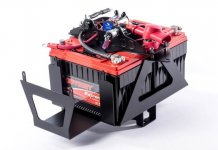
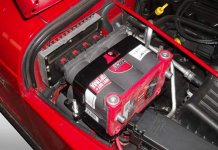
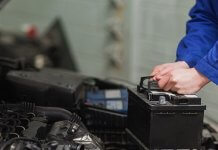
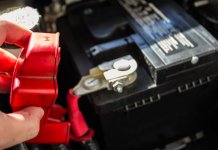











Hi! I could have sworn I’ve been to this site before but after
browsing through some of the post I realized it’s new to me.
Anyways, I’m definitely delighted I found it and I’ll be book-marking and checking back often!